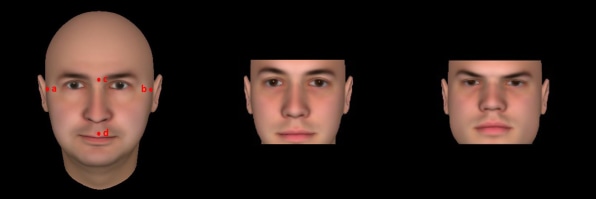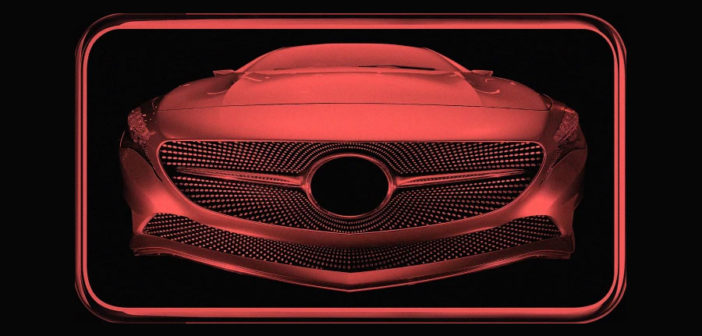Fear. Dominance. Weakness. All help explain why humans choose wide cars and wide watches.
It’s your 10-year high school reunion, and you’re dreading a confrontation with the school bully. How will you dress? What will you do? Most of us would want to look as dominant as we could. We’d roll up in the widest car we could rent, wearing the widest watch face we own. Unconsciously, we’d surround ourselves with products that mimic strong human faces.
That’s according to new research led by Ahreum Maeng, assistant professor in marketing at University of Kansas’s School of Business. “People use products to compensate for their need for dominance,” says Maeng. Over a series of studies, her team set out to understand why certain products evoke that dominance while others don’t. Fascinatingly, they found that wide products exude strength and dominance if they have a discernible “face,” including cars, clocks, and watches.

Maeng’s findings are part of a field of research that uses cognitive psychology to understand the decisions consumers make. But for designers, some of this research offers a glimpse into the intangible reasons people like what they like–the curve of an iPhone screen, the headlights of a car. These subtle, subjective judgments, once inexplicable, are slowly becoming explainable as the quantifiable intersection of art and science.In this case, that means understanding the human brain’s sensitivity to human faces. “If something looks like it has eyes, nose, or a mouth, people automatically process that as if it’s a human face,” says Maeng. “For any product with those features, our brain can’t help but process it as a human face. We’re also really good at catching these cues as they relate to dominance–[seeing]that this person is probably stronger than I am.”
Perhaps that’s not surprising. You only need to think about the undulating fury of an Italian sports car, like a Lamborghini or Ferrari, to understand how the face of a product can be designed to feel both a bit unsettling and appealing at the same time.

There’s a specific reason why we choose these wide faces in some situations: because humans have evolved to be scared of them. Previous research has found–and Maeng has confirmed–that we’re put off by wide faces specifically because they look dominant. “People don’t like the dominant human face, but people really like dominant-looking products, somehow,” says Maeng. “So we were intrigued to figure out why. And we figured out that. People probably see the dominant product as part of myself, that can boost my dominance, whereas human faces that are more dominant, we don’t like, because this other person will dominate me, and I’ll have to play the subordinate role.”Maeng reached this conclusion through a series of studies, discovering that while people don’t always prefer wide products, they often do when put into a high-pressure situation. In one study, participants were told they had to rent a car to drive to a job negotiation. They were told that the negotiation wasn’t going well, and the other side currently had the upper hand. People were offered the same model of BMW, but at various widths. And they agreed to spend more money on the wider car.
In another case, people were told they’d be attending the aforementioned high school reunion. Some were meeting up with their sweetheart; others, a bully. When choosing a watch to wear for the romantic interest, there was no strong design correlation. But for the bully? People chose the widest-faced watch they could.

Maeng’s conclusion is that people value dominating, wide products specifically for their complementary self-image. A product’s strengths mirror our weaknesses. “In some situations, people leverage the [wide]product, which looks dominant, to compensate their lack of dominance,” says Maeng. “[It] boosts their feelings of power or dominance.”But by this logic, if people prefer dominant objects that are, essentially, on their side, wouldn’t people also prefer dominant people who are on their side? Maeng studied this question, too, and found that yes, subjects responded better to wide-faced people who were said to be on a subject’s sports team than they would a wide-faced stranger. “When people see a dominant person’s face as close to themselves, they can handle this negativity toward wider faces,” says Maeng. “They don’t really like the wide face compared to a trustworthy person! But they don’t hate it as much when they think it’s a close person.”
So what can designers do with this information? Maeng suggests that for cars, houses, watches, or any type of status symbol product that seems to have a face, wide ratios may be more appealing to consumers, and command a higher sticker price. In fact, studying over 300 models of cars sold in the U.S. in 2013, Maeng’s team discovered that the automobile industry probably already understands this phenomenon better than anyone. Across all types of vehicle including sedans and SUVs, there was a positive correlation between price and width. The wider a vehicle was, the pricier it was, too.
Anyone designing products for positive, inviting, shared experiences–living room furnishings and children’s toys come to mind–should probably consider that their products might inadvertently mimic a wide face. But when it comes to bullies? Go wide, and spring for the Lambo.
–
Featured Image: Andrey Rudakov/Bloomberg/Getty Images
This article first appeared in www.fastcodesign.com
Seeking to build and grow your brand using the force of consumer insight, strategic foresight, creative disruption and technology prowess? Talk to us at +9714 3867728 or mail: info@groupisd.com or visit www.groupisd.com



